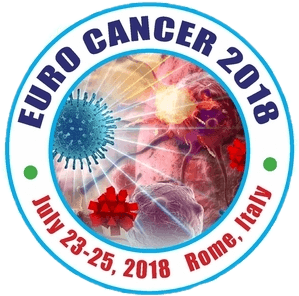
Sercan Ergun
Ordu University, Turkey
Biography
Statement of the Problem: In most of breast cancer cells, HER2 receptors are known to be cleaved by an ectodomain sheddase, ADAM10, to liberate HER2 extracellular domain (ECD). This provides ligand-independent growth to breast cancer cells and trastuzumab, anti-HER2 agent, cannot inactivate HER2 by binding ECD portion of it. In our previous studies, we found that miR-122-5p, miRNA targeting ADAM10, and trastuzumab combinatorial administration to HER2-positive breast cancer cell line, SKBR3, increases the efficiency of trastuzumab by leading SKBR3 cells to apoptosis more through blocking the sheddase activity of ADAM10 on HER2. The aim of this study is to display that miR-122-5p, together with trastuzumab, leads SKBR3 cells apoptosis by which pathway: intrinsic or extrinsic.
Methodology & Theoretical Orientation: SKBR3 cells were first transfected with the miR-122-5p mimic for 48 hours. Then, 0.5 μM trastuzumab was applied to miR-122-5p-transfected SKBR3 cells and non-transfected SKBR3 cells for 24 hours. Next, the expression levels of CASP3, CASP8 and CASP9 genes, which are key molecules in apoptotic pathway, were examined by real-time PCR.
Findings: Expression levels of CASP3 and CASP8, but not CASP9, increased significantly in miR-122-5p-transfected Trastuzumab-administered SKBR3 cells when compared to non-miR-122-5p transfected Trastuzumab-administered SKBR3 cells. A significant increase in the expression level of CASP8 with CASP3 showed apoptosis to be activated via extrinsic pathway (instead of the mitochondrial intrinsic pathway regulated by CASP9) with the effect of miR-122-5p in trastuzumab-administered SKBR3 cells.
Conclusion & Significance: Consequently, the apoptosis enhancing effect of trastuzumab and miR-122-5p combinatorial administration through extrinsic pathway may be presented as a new treatment option for HER2+ breast cancer.

